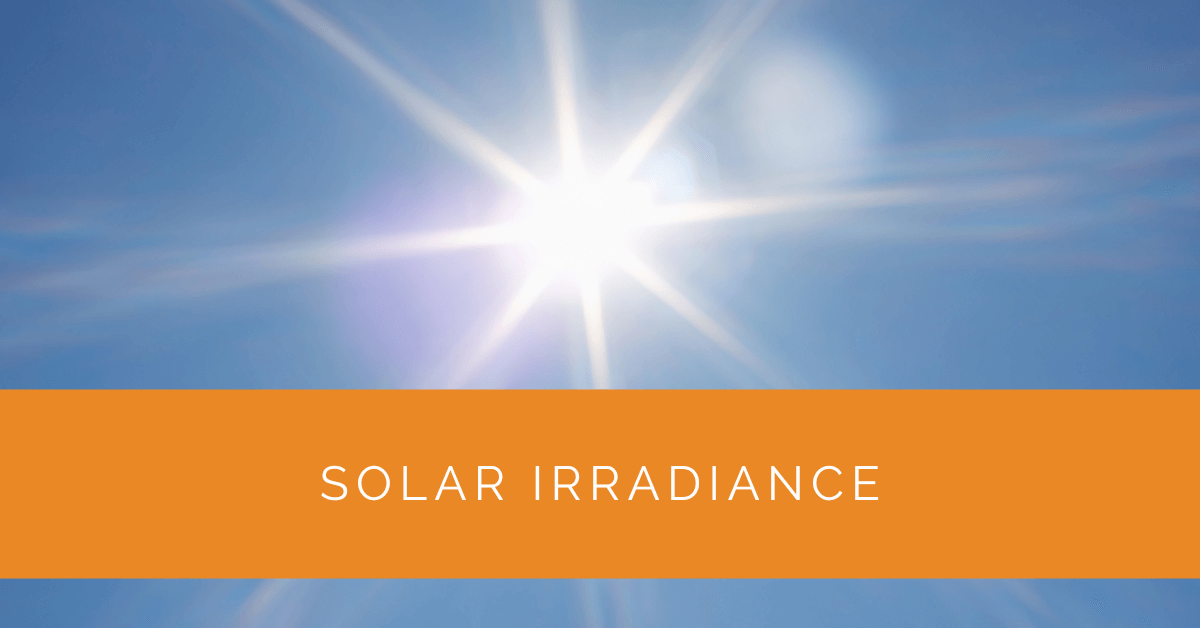Solar energy is harnessed from the abundant sunlight that reaches the Earth’s surface. The measurement and understanding of solar irradiance, the amount of solar energy received per unit area, are crucial in maximizing the efficiency and output of solar energy systems. This article will explore the concept of solar irradiance, its various components, and its significance in powering solar panels.
Contents
- 1 Key Takeaways
- 2 Solar Irradiance: Exploring the Basics
- 3 The Significance of Solar Irradiance in Solar Energy Systems
- 4 The Role of Climate in Solar Irradiance
- 5 Harnessing Solar Irradiance: Tools and Techniques
- 6 Maximizing Solar Irradiance for Optimal Energy Production
- 7 Experience Solar Excellence with Us!
- 8 Conclusion
Key Takeaways
- Solar irradiance, the amount of solar energy received per unit area, is a crucial factor in the efficiency and output of solar energy systems.
- Understanding solar irradiance patterns and accurately estimating energy output is essential for optimal system design and performance.
- Climate, regional variations, and careful system optimization play significant roles in maximizing solar irradiance and energy production.
Solar Irradiance: Exploring the Basics
What is Solar Irradiance?
Solar irradiance refers to the amount of solar radiation received per unit area on a surface. It represents the power of sunlight falling on a specific location and is usually measured in watts per square meter (W/m²). Solar irradiance encompasses direct (beam) and indirect (diffuse) radiation components.
Differentiating Total Solar Irradiance and Solar Insolation
Total Solar Irradiance (TSI) refers to the amount of solar energy received at the top of the Earth’s atmosphere. It is a constant value used as a reference to understand variations in solar irradiance. On the other hand, solar insolation represents the solar energy that reaches the Earth’s surface, taking into account the effects of the atmosphere.
Understanding Units of Measurement and Terminology
Solar irradiance can be measured and expressed in different units. The most common unit is watts per square meter (W/m²), but other units like kilowatts per square meter (kW/m²) or British thermal units per hour per square foot (BTU/(hr·ft²)) are also used. Knowing the unit used when working with solar irradiance data is important.
The Significance of Solar Irradiance in Solar Energy Systems
How Solar Irradiance Impacts Energy Generation
Solar irradiance directly affects the energy generation of solar panels. Higher irradiance levels increase power output, while lower levels can lead to reduced energy production. Understanding the solar irradiance patterns at a specific location helps in accurately estimating the energy output of solar panels and designing efficient solar energy systems.
Calculating Solar Irradiance and Its Role in System Sizing
Solar irradiance can be calculated using various methods, including satellite data, ground-based measurements, and models based on historical weather data. These calculations provide valuable information for system sizing, determining the number and capacity of solar panels required to meet energy needs. Accurate solar irradiance data ensures optimal system performance and energy production.
Estimating Energy Output: Peak Sun Hours and Insolation Data
Peak Sun Hours (PSH) and solar insolation are essential parameters used to estimate the energy output of solar panels. Peak Sun Hours represent the hours during a day when solar irradiance exceeds a specific threshold, typically around 1,000 W/m². Solar insolation data provides information on the average solar energy received per unit area over a period, usually expressed in kilowatt-hours per square meter (kWh/m²). These metrics aid in system design, financial analysis, and performance evaluation of solar energy systems.

The Role of Climate in Solar Irradiance
Climatic Effects on Solar Irradiance
Climatic factors, such as cloud cover, atmospheric conditions, and air pollution, can significantly impact solar irradiance. Clouds, for example, can reduce solar irradiance by blocking a portion of sunlight. Variations in atmospheric conditions, including water vapor content and aerosols, can also affect the scattering and absorption of solar radiation. Understanding climatic effects helps predict and manage solar panels’ energy generation capabilities.
Regional Variations and Factors Affecting Solar Irradiance
Solar irradiance levels vary across different regions due to geographical factors, such as latitude, altitude, and proximity to large bodies of water. Locations closer to the equator generally receive higher solar irradiance throughout the year. Other factors, such as topography, vegetation, and nearby structures, can cause shading and impact the available solar irradiance. Considering these factors is crucial when evaluating the feasibility and performance of solar energy systems in specific locations.
Evaluating the Influence of Weather Patterns on Solar Energy Production
Weather patterns, including seasonal changes, sunspot activity, and atmospheric phenomena, can influence solar energy production. Seasonal variations in solar irradiance occur due to changes in the Earth’s tilt and the varying path of the sun throughout the year. Sunspot activity, which follows an 11-year cycle, can affect solar irradiance levels. Understanding these weather-related influences helps predict long-term energy production and optimize system performance.
Harnessing Solar Irradiance: Tools and Techniques
Utilizing Irradiance Calculators for Accurate Estimations
Irradiance calculators are valuable tools for accurately estimating solar irradiance at a given location. These online tools utilize historical weather data, geographical coordinates, and other relevant parameters to provide real-time or historical irradiance values. Solar energy professionals and enthusiasts can obtain reliable irradiance data for system design, performance analysis, and financial modeling by inputting location-specific information.
Understanding Solar Irradiance Data Sources and Validation
Solar irradiance data can be obtained from various sources, including meteorological agencies, satellite observations, and ground-based measurements. It is essential to ensure the data’s quality and reliability by considering factors such as sensor calibration, data validation techniques, and the use of reputable sources. Validated and accurate solar irradiance data form the basis for making informed decisions regarding solar energy systems.
Enhancing Efficiency Through Real-Time Monitoring and Forecasting
Real-time monitoring and forecasting systems enable continuous solar irradiance and energy production monitoring. These systems utilize on-site sensors, weather forecasts, and advanced algorithms to provide real-time performance data, detect anomalies, and optimize system efficiency. By leveraging these technologies, system owners can maximize energy generation, identify issues promptly, and proactively manage their solar energy systems.

Maximizing Solar Irradiance for Optimal Energy Production
Site Selection and Positioning for Maximum Solar Irradiance
Choosing an appropriate site for solar panel installation is crucial for maximizing solar irradiance. Factors such as shading from nearby objects, trees, or buildings should be considered to ensure optimal sun exposure throughout the day. The selection of the optimal tilt and orientation of solar panels also plays a significant role in capturing the maximum available solar irradiance at a given location.
Optimizing Tilt and Orientation of Solar Panels
Solar panels’ tilt angle and orientation impact their exposure to solar irradiance. Adjusting the tilt angle according to the geographical latitude of the installation site helps optimize energy production throughout the year. Similarly, orienting the panels to face the sun’s path maximizes their exposure to solar irradiance, particularly during peak sun hours. Careful consideration of these parameters enhances the overall energy generation of solar panels.
Managing Shading and Obstructions to Maximize Irradiance Capture
Shading from objects, such as nearby buildings, trees, or even dust accumulation on the panels, can significantly reduce the available solar irradiance. Identifying potential shading issues and managing them effectively through proper panel placement, trimming vegetation, or utilizing shading analysis tools helps maximize the capture of solar irradiance. This proactive approach ensures consistent energy production and system efficiency.
Experience Solar Excellence with Us!
Trust in Solar Panels Network USA, where our seasoned experts deliver top-quality solar solutions for homes and businesses nationwide. With a legacy of countless successful installations and a commitment to sustainable energy, we’re your reliable partner in the solar journey. Ready for a brighter, eco-friendly future? Call us now at (855) 427-0058 and harness the power of the sun!
Conclusion
Solar irradiance is a critical factor in the success of solar energy systems. Understanding and harnessing the power of solar irradiance enable accurate system design, efficient energy production, and informed decision-making. Solar energy stakeholders can unlock the full potential of solar irradiance by considering climatic effects, and regional variations, optimizing system parameters, and paving the way for a sustainable and renewable energy future.
About the Author
Solar Panels Network USA stands at the forefront of solar energy solutions, driven by a team of seasoned solar engineers and energy consultants. With over decades of experience in delivering high-quality solar installations and maintenance, we are committed to promoting sustainable energy through customer-centric, tailored solutions. Our articles reflect this commitment, crafted collaboratively by experts to provide accurate, up-to-date insights into solar technology, ensuring our readers are well-informed and empowered in their solar energy decisions.

